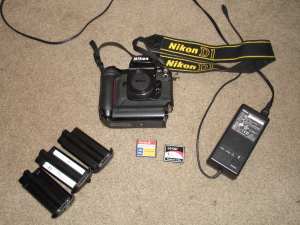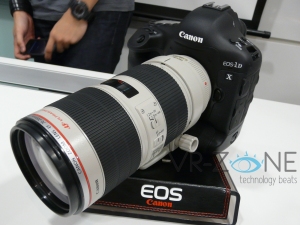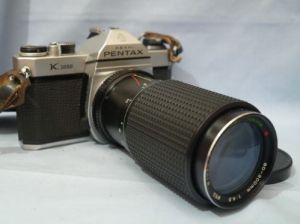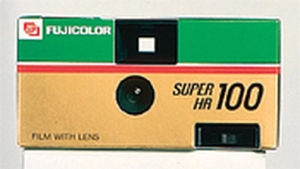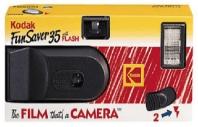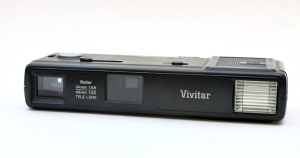Uncategorized
Why Do We Love Photography? A Thirty Somethings Photographic Journey. 2000s and Beyond. Part 14
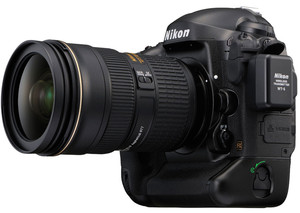
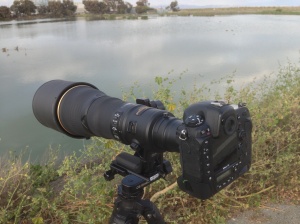
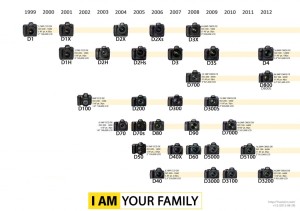
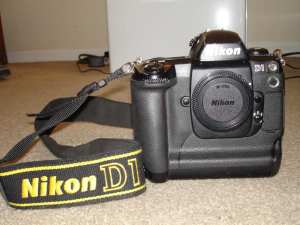
My favorite camera of all-time is the Nikon DSLR and the very first one I ever used was the Nikon D1, which was released right around the turn of the century. The Nikon D1 was a big step up from the Kodak digital cameras and brought me into the age of GB camera cards which held much more photos than their MB ancestors. The Nikon DSLR D1 would be the first of many digital models the company would make leading to the evolution from compact flash cards to SD cards which we primarily use now in 2014 until the next big thing in camera cards emerges. Nikon’s most recent digital models, the D4S and D3X price for 6,500 and 8,000 dollars respectively, so it will be a long time before this photographer gets his hands on one of those unless just browsing at a store.
Nevertheless, the D5100 can be purchased for a much more mainstream price of 599 dollars. Some might even say 500 dollars is too much for a damn camera and who could argue with that logic except maybe Nikon or Canon.
Speaking of Canon, the two most notable camera companies have been the source of most of my photography in the last 10 years or so. I’ve either shot with Nikon or Canon and have found myself defending my preference numerous times. In case you’re wondering, one of Canon’s newest models sold in 2014, the EOS-1D X is going for about seven thousand bucks. That will be put on hold for maybe a decade or so as well.
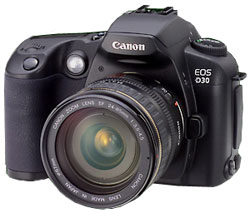
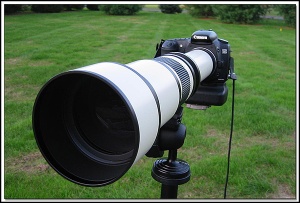
Why Do We Love Photography? A Thirty Somethings Photographic Journey. Rapidly Changing Technology. 1987-1999 Part 13

Video cameras in the 90s went from large over-the-shoulder varieties to camcorders you could easily carry with one hand. The Sony Handycam was the first of the smaller video cameras I owned. Instead of using a large VHS tape, it used a Hi8 Cassette that could hold around two hours of film. The Sony Handycam of the late 90s and early 2000s was much larger than the camcorders of 2014 that fit perfectly in a closed palm hand. It also had a ridiculous amount of wires and did not hold a charge near as well as later model camcorders. Nevertheless, it had an amazing 400 plus zoom, could take still pictures, and had a popout viewing screen as well as an eyepiece to record action.
A lot of my college memories as well as my experiences working at my first job were recorded using this device. One of the downsides to owning one was because it used film cassettes, you had to remember where you left off filming and didn’t want to accidently film over or erase previous work. It was a welcomed change from the bulkier cameras of the past and had great picture definition which was perfect for recording sporting activities.
Why Do We Love Photography? A Thirty Somethings Photographic Journey. Rapidly Changing Technology. 1987-1999 Part 12
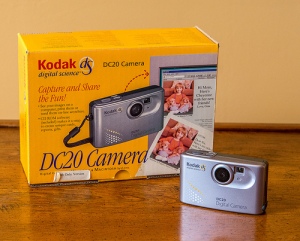

In 1996, for just under 300 hundred bucks you could get a piece of a revolution. Digital cameras had been invented in the 1970s, but were not commonly used because of their staggering price and other technical problems such as slow usage time and blurry images. In 1996, I purchased the DC20 in the hopes that I had stumbled upon the new wave of technology. Unfortunately, the quality of digital pictures at that time were not that great and that DC20 was more of a conversation piece than anything. I knew even then that digital cameras were a smart concept, but also knew that unless the quality improved that film cameras would remain my first option.
Two years later in 1998, I was introduced to the Kodak DC260 which had a larger zoom lens than the DC20 and had a picture review screen on the back so you could instantly know if you wanted to keep your frames or delete them immediately. The big hang-up with digital cameras in the late 90s were their large file sizes, 15 second photo storage time and the fact that it could only hold at best 30 pictures at one time. Ten megabit photo cards are a far cry from the much larger GB cards of 2014, but all things have to start somewhere. For a college kid, it was exciting to have two options of film and digital cameras. In the 1990s, several of my friends laughed at the digital cameras because of their poor image quality, but I knew it was the beginning of something big. However, I had no idea that as the 2000s approached, the film camera would give way completely to the digital revolution.
Why Do We Love Photography? A Thirty Somethings Photographic Journey. Rapidly Changing Technology. 1987-1999 Part 11
In 1989, I was introduced to the single lens reflex Pentax 35mm. The Pentax 35mm along with the Minolta version, would be my choice cameras as journalism student in middle and high school. The great thing about the Pentax SLR was the option to swap out a small lens for a much larger 300mm lens to shoot sporting events. Interchangible lenses and the option to change shutter speed and aperture settings along with adding a number of flash options made it the ideal choice for a young photographer.
The only downside to this particular camera was ensuring that the film roll was completely rolled properly so that exposure does not occur. Another problem was sometimes the back panel would pop open randomly exposing your film. An issue that later models fixed. Nevertheless, that silver and black camera looked cool and could be customized. Some of my fondest memories of newspaper and yearbook class were hauling around the Pentax to different events.
Why Do We Love Photography? A Thirty Somethings Photographic Journey. Rapidly Changing Technology. 1987-1999 Part 10
The year 1987 was a memorable one for several reasons, but when speaking of photography, it was the year I was introduced to Nikon for the first time. The camera brand that would ultimately become my primary camera of choice all began with a simple camera known as the “One Touch”. The “One Touch” used standard 35mm film and had a better flash than other light weight models of the late 80s.
This camera fell in between the disposable and SLR cameras because it was light weight and affordable like the disposable, but had automatic focus like SLRs. Unlike the SLRs, the “One Touch” gave photographers a bit more range than disposables but no opportunity to swap out for a bigger lens. Nevertheless, it’s portability made it the preferred companion for road trips in the late 80s and early 90s.
Why Do We Love Photography? A Thirty Somethings Photographic Journey. The early years 1976-1986 Part Eight


The 1970s and 1980s seem like forever ago now, but the electronic gadgets I used back then have made a powerful impression on who I am today. Simply put, once a gadget geek always a gadget geek. As I close this section of my blog, I will end it with images of the 1980s other than cameras that make us older folks smile a bit.
Why Do We Love Photography? A Thirty Somethings Photographic Journey. The early years 1976-1986 Part Seven
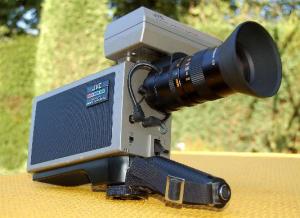
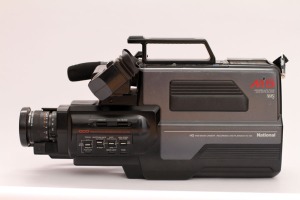
In addition to having still image cameras, those many trips to garage sales in the 1980s yielded the over-the-shoulder video camera. For a kid it was heavy to carry around much like a pair of golf clubs, but the idea of recording a moving image was still a cool concept. If I remember correctly we had two of them in the 1980s, one was a JVC and the other an RCA.
Upon getting these video cameras, I started to learn at an early age the fine art of video editing. The cameras that we had used a standard VHS tape and if you hit the rewind button and didn’t return to the correct point, you would erase the footage you had before. The only thing digital I recall about the cameras were the fact that you could imprint the date and time on your video. Video cameras have come a long way and are so much better now, but everything has to start somewhere and I spent a lot of hours experimenting with those cameras. Some of the cool features that I remember the most was being able to shoot a split screen and you could also shoot images in black and white as well as color. Several trips to the beach in the 1980s were recorded using these camera “dinosaurs”, but they sure were fun.
Why Do We Love Photography? A Thirty Somethings Photographic Journey. The early years 1976-1986 Part Six
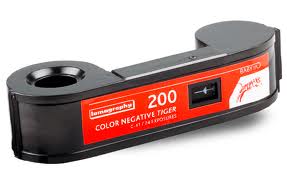
 In 1985, I turned nine years old and was introduced to a new way to take pictures that had several advantages. Dubbed “The 110”, the Vivatar 110 model camera was flat, light weight, and could fit in your blue jeans pocket. Equipped with the revolutionary Lomography 110 film cartridge, which popped in and out of the 110 camera with minimal risk of overexposure, the Vivatar 110 was the perfect vacation camera and was the source of most of my family photos in the mid 1980s. “The 110” was cheap and much more affordable than other models of cameras and even had a key chain micro version.
In 1985, I turned nine years old and was introduced to a new way to take pictures that had several advantages. Dubbed “The 110”, the Vivatar 110 model camera was flat, light weight, and could fit in your blue jeans pocket. Equipped with the revolutionary Lomography 110 film cartridge, which popped in and out of the 110 camera with minimal risk of overexposure, the Vivatar 110 was the perfect vacation camera and was the source of most of my family photos in the mid 1980s. “The 110” was cheap and much more affordable than other models of cameras and even had a key chain micro version.
Lomography was the original 110, but soon Fuji and Kodak made film for it that was affordable. The big advantage of the 110 was its price and portability. However, “The 110” did not have a zoom lens of any kind and if you shake during the picture, it was blurry. Therefore explaining why some of those family photos in the mid-1980s were almost ghostly looking from the tremble of the photographers hand. Nevertheless, the Hemisfair Arena (a common gathering place for my family during basketball season in the 1980s) appeared very fuzzy and the basketball shots were very out of focus. “The 110” was great for taking to WaterWorld or AstroWorld in Houston during the summers though.
Why Do We Love Photography? A Thirty Somethings Photographic Journey. The early years 1976-1986 Part Five

Although we couldn’t make up our mind at the time which was better between Betamax or VCR or even Microwave Ovens compared to the old school large ovens, the days of automatic Polaroids were numbered and 35mm still film cameras were “the wave of the future”. Much like Compact Discs were so much more convenient than say LP records or dare I say 8-tracks, 35mm film cameras simply could take better quality pictures than the old automatic instant picture point and clicks.
Despite the fear of overexposure looming large from accidentally opening up the camera, the increased control and experimentation opportunities of film cameras made them exciting to have back then. The 1983 Olympus OM-3 was an SLR camera like my dad’s Minolta with shutter control and exposure timing, but had an even cooler feature known as an automatic lens. This was a huge improvement and big step up from having to do it all yourself.
